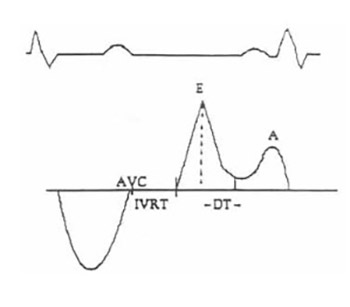Left Venticular Diastolic Dysfunction in Essential Hypertension
DOI:
https://doi.org/10.17305/bjbms.2007.3082Keywords:
diastolic dysfunction, essential hypertension, left ventricular hypertrophy, mitral inflow velocityAbstract
Diastolic dysfunction is very frequent and is actually sign of manifest heart weakness. Over 40% of patients with heart weakness have isolated left ventricular diastolic dysfunction (LVDD). New diagnostics methods as Doppler Echocardiography with close monitoring enables precise and early LVDD diagnose. In all diastolic phases artery hypertension weakens relaxation and left ventricular hypertrophy (LVH) weakens compliance also. The purpose of this study is to demonstrate importance of all LVDD. Doppler echocardiography parameters usage and its important echocardiography characteristic in case of hypertensive patients. This study represents 64 patients with essential hypertension - random sample. Three patients had atrial fibrillation. Besides anamnestic data collection, echocardiography evaluation was undertaken on all patients. For LVDD diagnose following parameters were used: isovolumic relaxation time (IVRT), peak early filling velocity (E), peak atrial filling velocity (A), E/A ratio, DT (deceleration time), left ventricular (LV) mass. Left ventricular hypertrophy (LVH) was verified for 57 patients. Seven hypertensive patients didn't have verified LVH. Comparing patients with LVH with those without LVH differences were observed: patients with LVH had a longer IVRT, lower E/A ratio, A wave growth, IVRT directly correlates with LV mass increase and backward correlation LV mass with E/A was noticed. Among patients with LVH with E/A ratio =or> 1-1,5 and based on transmitral flow we used IVRT duration and pulse Doppler with volume sample over lateral mitral annulus measuring mitral annulus velocity. It appeared that it corresponds with IVRT duration in LVDD evaluation. Patients with atrial fibrillation had considerably extended IVRT that indicates LVDD existence. Patients with left ventricular hypertrophy were older and they have higher left ventricular mass comparing with patients without left ventricular hypertrophy. In case of patients with essential hypertension all above mentioned LVDD parameters have to be defined, specially IVRT duration for determination of LVDD existence in case of all patients with essential hypertension with and without LVH and in case of associated atrial fibrillation presence. It is necessary to tend to, as early as possible, detect LVDD and it's prevention with improved essential hypertension monitoring.
Citations
Downloads

Downloads
Published
Issue
Section
Categories
How to Cite
Accepted 2018-01-26
Published 2007-02-20









